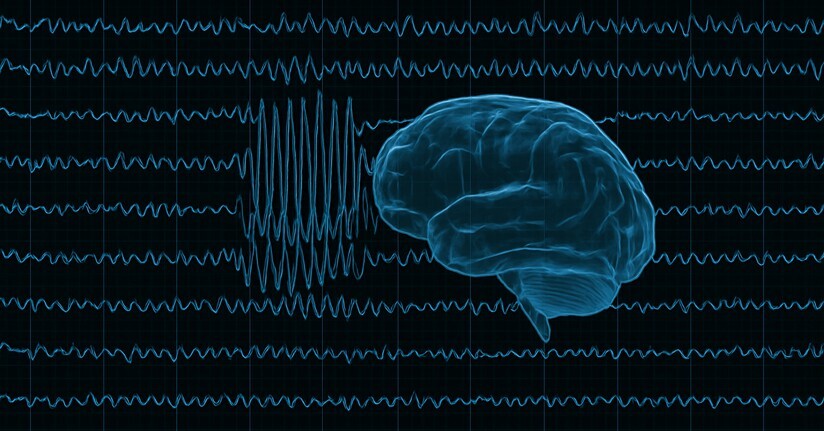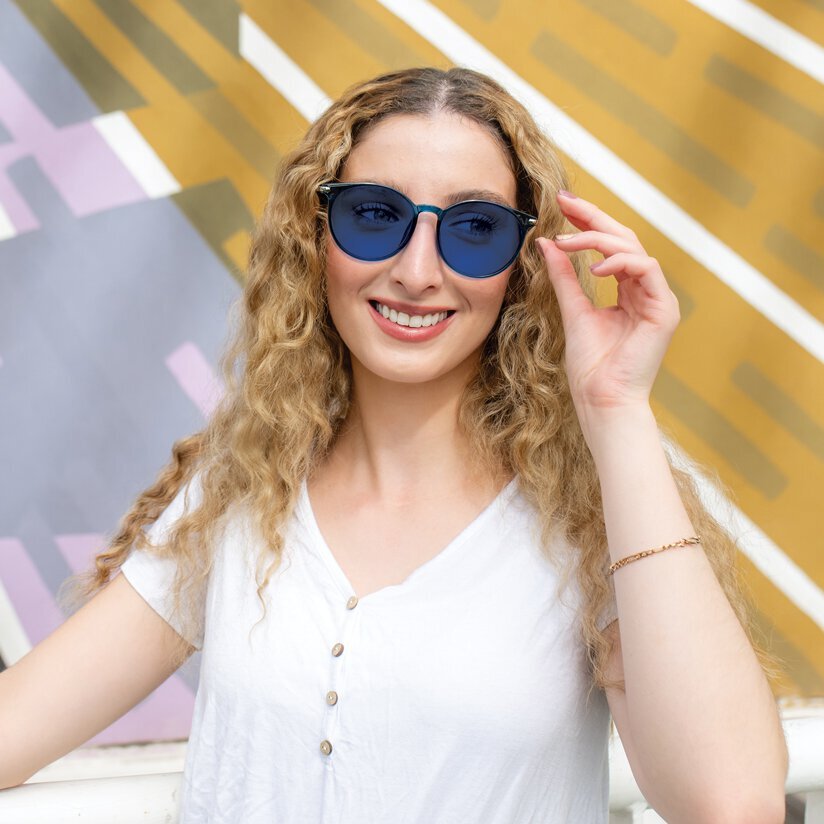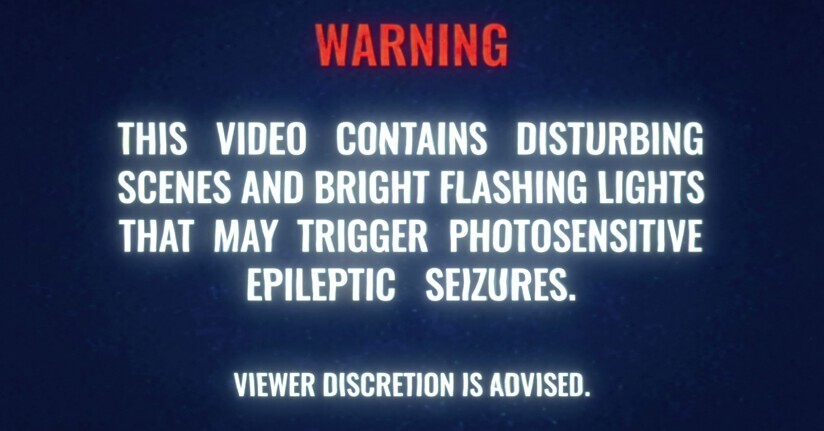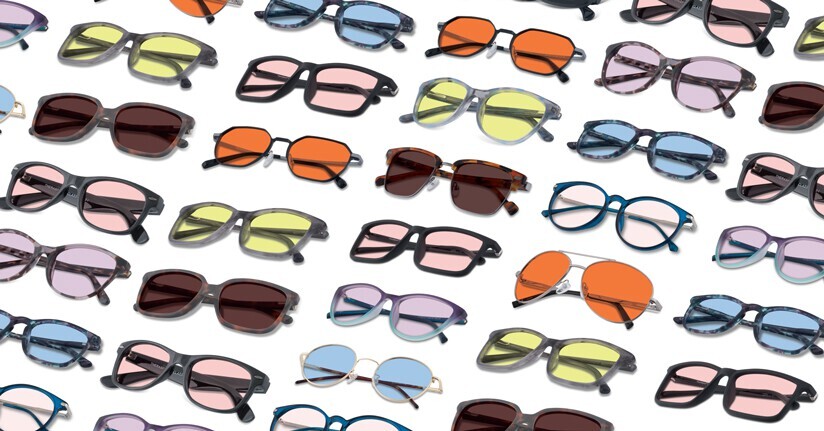Flashing Lights and Visually-Sensitive Seizures: Your Questions Answered
Key Highlights
- Flashing lights can trigger seizures for as many as 1 in 4000 persons, especially if they have been diagnosed with certain types of epilepsy.
- Lights that flash between 3–30 times per second are the most likely to trigger seizures, especially when viewed up close or in dark settings.
- Modern screens are generally safer, but fast edits, bright flashes, and intense visuals can still pose risks.
- Specialized eyewear that filters red light (580–700nm) may reduce sensitivity to intense flashes and patterns.
You’ve probably seen the warning: "This program contains flashing lights that may affect viewers who are sensitive to light." These notices aren’t just legal disclaimers—they exist to protect people who can experience seizures or other adverse effects from certain visual triggers. If you’ve ever wondered how flashing lights can impact the brain, here are the 10 key things you should know.
Can flashing or blinking lights actually trigger a seizure?
Yes, in some people, flashing, blinking, or strobing lights can trigger seizures—especially when the flashes are bright, rapid, and repetitive and viewed at close range. This type of response is most often linked to a form of epilepsy known as photosensitive epilepsy, where certain visual patterns or light frequencies can overstimulate the brain. While this is relatively rare—occurring in up to 1 in 4000 people—it’s a well-documented phenomenon, and it can affect both children and adults.1 People who are sensitive may react to things like strobe lights, fast-paced video games, or even sunlight flickering through trees while driving.
What kinds of seizures are caused by flashing lights? What types of epilepsy are most susceptible?
Flashing or flickering lights can trigger seizures in people with certain types of epilepsy, especially those with generalized epilepsy, where seizures affect both sides of the brain. These types of epilepsy are often inherited and include conditions like Juvenile Myoclonic Epilepsy, Dravet Syndrome, and Progressive Myoclonus Epilepsy, all of which can make a person more sensitive to visual triggers.
There are also rare epilepsy syndromes like Sunflower Syndrome, where seizures are triggered by sunlight. More specifically, children with unique disorder are drawn to sunlight and may wave their fingers in front of their eyes during an episode. These movements are often part of the seizure itself and may be followed by eye blinking, staring spells, or even full-body convulsions.
How do flashing lights lead to seizures in the brain?

When pulsing lights enter your eyes, they send signals to the part of the brain that processes vision. In some people, especially those with light-sensitive seizures, these signals can cause the brain to react too strongly. Doctors can sometimes confirm this by using a test called an EEG, where flashing lights are shown while the brain’s electrical activity is recorded. In people who are sensitive, the EEG shows a specific pattern of increased brain activity in sync with the flashes. This overactive response can then lead to a seizure.
Who is most at risk for flashing light-triggered seizures?
As mentioned, people with photosensitive epilepsy and other epilepsy syndromes may be most susceptible to seizures brought on by light flashes. Children and teenagers are even more likely to experience them, as epilepsy is frequently diagnosed in childhood. However, it is worth noting that research also suggests that more than half of children who have visually-provoked seizures outgrow their sensitivity as they reach adulthood.
Women in general also have a higher risk for photosensitive seizures, and it may even be hereditary: one study found that children of women with visually-provoked seizures have about a 25% chance of showing an abnormal brain response to flashing lights on EEG, though only around half of those children go on to develop epilepsy.1
Additionally, there seems to be a higher risk for the development of co-morbid migraine and epilepsy; in fact, people with migraine may have a 3x risk of developing epilepsy when compared with other types of headaches. Given the prominent visual disruptions associated with migraine, this may further increase their risk of light-triggered seizures or discomfort.2
Even without a formal epilepsy diagnosis, people can experience photosensitive seizures caused by flashing or strobing lights—although it is rare.
Can flashing lights cause seizures without epilepsy?
By definition, visually-provoked seizures are epileptic events, but a person can experience them without being formally diagnosed with epilepsy. In particular, many people without epilepsy can show signs of brain hyperreactivity when exposed to flashing or triggering light—known as a photoparoxysmal response (PPR).
It also seems to be more common in childhood, with some estimates suggesting that nearly 10% of healthy kids may exhibit these photosensitive reactions to light without epilepsy. But even so, this does not automatically guarantee the occurrence of seizures; it only means that their brain activity puts them at higher risk.
What types of light are most triggering?
The most triggering lights are those that flash or flicker at certain speeds, especially in the range of 3 to 30 flashes per second (or hertz). This frequency is particularly likely to provoke seizures in people with photosensitivity, with 15–20 Hz being the most common trouble zone. Intense flashing or blinking lights during concerts, while playing video games or watching movies, flashes from fireworks, emergency vehicles, all pose a threat to people with a seizure risk.
But it's not just the flashing itself—how and where the light is viewed can make a big difference. Watching at a close distance, viewing on a large screen, or being in a dark room with a bright flashing source are all more likely to aggravate a sensitive brain.
Provoking patterns, especially if they feature movement or vibration, can complicate symptoms too; about 1/3rd of people who are sensitive to flickering light are also sensitive to patterns. It’s why sunlight flickering through trees while riding in a moving car is one of the most common complaints for sensitive individuals.
Can using a computer or viewing screens trigger a seizure?
Watching TV, viewing videos on a smartphone, or working on a computer is not automatically dangerous for people with light-sensitive seizures. In fact, most modern screens—like LED monitors, laptops, and newer flat-panel TVs—are much safer than older models, which were more likely to flicker at seizure-provoking rates. The fact that many devices have relatively small screen sizes also makes it less likely that they will bring about a seizure, but the risk is not zero.
The real concern comes from what’s on the screen, not just the screen itself. Bright flashes, fast scene changes, or patterns that move rapidly (like spinning wheels or flashing bars) are more likely to trigger seizures—especially when viewed up close, on large or curved screens, or in a dark room. High-intensity video games, music videos, or movies with quick editing and strobe effects can be much more triggering than everyday computer work like reading, typing, or browsing the web.
How can I better manage seizures caused by flashing or blinking lights?
The best way to reduce the risk is to exercise caution around known triggers. In some cases, this may mean avoiding situations or environments that you know can aggravate your episodes. If you do suddenly encounter flashing lights or intense visual patterns, covering one eye with your hand and looking away is a simple, fast way to lower your chance of having a seizure. (Just closing your eyes isn't enough, as light can still pass through your eyelids and may even make things worse.)
There are also general habits that can help reduce overall seizure risk:
- Get enough sleep and manage stress
- Take medications as prescribed
- Limit time spent on video games or intense visual media
- Sit farther back from screens, lower the brightness and contrast, and keep the room well-lit while using electronic devices
On some phones, websites, and apps, you can also disable autoplay videos, reduce motion or flashing effects, and turn on screen safety features that reduce high-contrast visuals.
Tinted eyewear for photosensitivity can also help reduce risk for many people.

How do specialty-tinted glasses reduce the risk of flashing or strobing lights?
Although any type of exposure to intense light sources is a concern, evidence suggests that certain wavelengths may be more problematic than others—specifically light in the red part of the spectrum (580-700nm).3 These wavelengths pose the biggest threat to activating the seizure-causing response in the brain.
As a result, specialty glasses that filter this light can offer protection against flashing light exposure. They do not have to be polarized, but they must strongly filter the irritating wavelengths in order to be maximally effective, which often gives the lenses a deep blue tint.4 Dark and polarized sunglasses are also an option, especially for daytime activities that result in exposure to bright sunlight.
If your photosensitive seizures are complicated by more traditional light sensitivity (e.g. you have also been diagnosed with migraine), then FL-41 glasses might be an option to mitigate the impact of intrusive light.
Are there any rules about giving seizure warnings before flashing or strobing content?
In most places, there are no strict laws that require movies or TV shows to include seizure warnings for flashing lights or strobe effects. However, some content creators and streaming platforms choose to include these warnings voluntarily—especially if a scene includes intense flashing or visual effects that could be triggering for people with photosensitivity.
Video games, on the other hand, are more commonly required to include warnings about seizure risks. In the U.S., for example, games often include a photosensitivity warning as part of their standard health and safety guidelines.

Because these warnings aren’t guaranteed, it’s always a good idea for people with light-triggered epilepsy to approach new visual content with caution—especially when watching action-heavy shows, movies, or music videos.
Can people with this type of visual sensitivity live a normal life?
Yes, they absolutely can. Living with light-triggered seizures or visual sensitivity can feel overwhelming at times, especially when everyday environments include things like flashing screens or bright lights. But with some awareness, planning, and support, many people find they can manage their triggers and still do the things they enjoy.
Whether it’s adjusting screen settings, using protective glasses, or simply knowing when to take breaks, small changes can make a big difference. It might take some trial and error to figure out what works best for you, but you're not alone—and with the right strategies, this condition doesn’t have to hold you back from living a full and active life.
Primary Reference:
Kasteleijn-Nolst Trenité D, Acharya J, Baumer FM, et al. Frequently asked questions and answers on Visually-Provoked (Photosensitive) epilepsy. Epilepsy Behav Rep. 2025;30:100753. Published 2025 Feb 10. doi:10.1016/j.ebr.2025.100753
Additional References:
1Fisher RS, Acharya JN, Baumer FM, et al. Visually sensitive seizures: An updated review by the Epilepsy Foundation. Epilepsia. 2022;63(4):739-768. doi:10.1111/epi.17175
2Kasteleijn-Nolst Trenité DG, Verrotti A, Di Fonzo A, et al. Headache, epilepsy and photosensitivity: how are they connected?. J Headache Pain. 2010;11(6):469-476. doi:10.1007/s10194-010-0229-9
3AlDajani BA, Uzair M, Qaiser H, et al. Evaluating the Potential of Light Exposure on Reducing the Frequency of Epileptic Seizures. CNS Neurol Disord Drug Targets. 2024;23(4):463-467. doi:10.2174/1871527322666230407104706
3Capovilla G, Gambardella A, Rubboli G, et al. Suppressive efficacy by a commercially available blue lens on PPR in 610 photosensitive epilepsy patients. Epilepsia. 2006;47(3):529-533. doi:10.1111/j.1528-1167.2006.00463.x
Last updated 29th July 2025

TheraSpecs® Glasses for Light Sensitivity
Find the glasses that fit your needs and lifestyle, and stay protected from screens, fluorescents, unwanted blue light, sunlight, flashing lights, and more.
Shop Now





